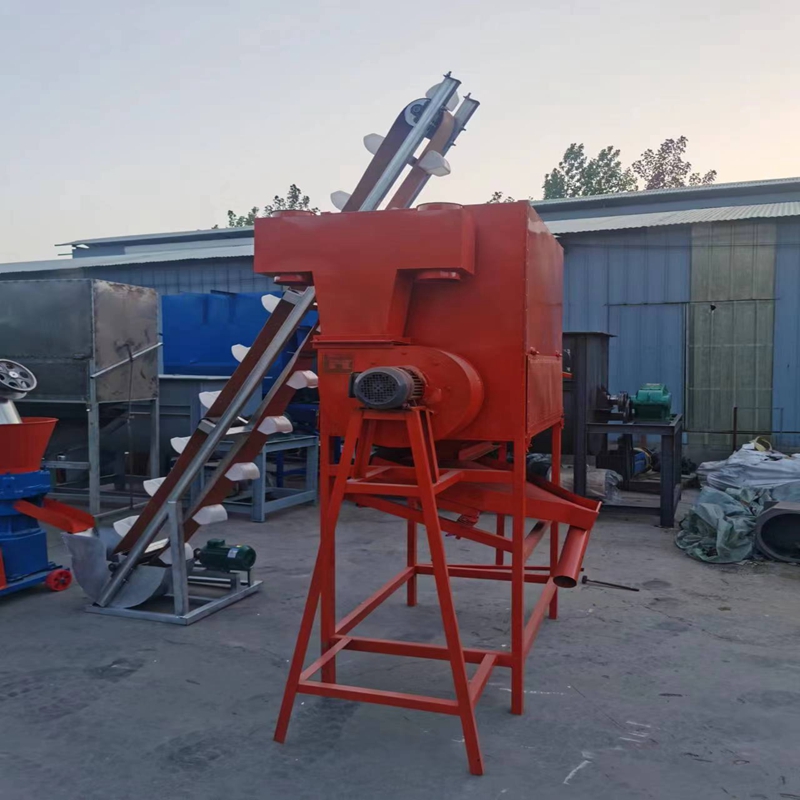fish feed pellet making machine
Nov . 12, 2024 18:07 Back to list
fish feed pellet making machine
Understanding Fish Feed Pellet Making Machines
In the realm of aquaculture, the demand for high-quality fish feed has surged, leading to the widespread utilization of fish feed pellet making machines. These machines play a pivotal role in the production of efficient, nutritious, and palatable feed pellets that cater to the dietary needs of various fish species. This article delves into the workings, benefits, and selection criteria for fish feed pellet making machines.
How Fish Feed Pellet Making Machines Work
The operation of a fish feed pellet making machine involves several key stages, starting from raw material preparation to the extrusion of final pellets. The primary ingredients, such as fish meal, soybean meal, corn, and various vitamins and minerals, are first mixed in a specific ratio to ensure a balanced nutritional composition. This mixture is often ground into a fine powder to enhance its digestibility.
After mixing, the feed formulation is fed into the machine’s extruder. The extruder combines heat, moisture, and pressure to transform the feed mixture into a uniform, dough-like consistency. The mixture is then forced through a die, shaping it into pellets of desired size and shape. As the pellets exit the machine, they are cut into uniform lengths and can be dried or cooled before packaging.
Benefits of Fish Feed Pellet Making Machines
1. Nutritional Efficiency Pelleted feed ensures that fish receive a balanced diet rich in necessary nutrients. The compression process during pellet making also preserves the nutritional quality of the ingredients.
2. Reduced Waste Fish feed pellets are designed for optimal floating and sinking properties, reducing wastage and ensuring that fish consume more feed rather than letting it settle at the bottom of the water body.
3. Cost-Effectiveness By utilizing these machines, fish farmers can produce their own feed tailored to the specific needs of their fish, significantly lowering feed costs compared to purchasing commercial feeds.
4. Variety of Products These machines can produce a range of products, catering to different species and life stages of fish. Adjustments in formulation, size, and shape can be made to meet various market demands.
fish feed pellet making machine

5. Sustainability As aquaculture grows, sustainable feeding practices become paramount. Fish feed pellet making machines allow farmers to incorporate natural and locally sourced ingredients, reducing reliance on imported feeds.
Choosing the Right Fish Feed Pellet Making Machine
When selecting a fish feed pellet making machine, several factors should be considered
1. Production Capacity Evaluate the scale of your production needs. Machines vary significantly in output, from small-scale digesters suitable for hobbyist operations to large industrial setups.
2. Material Versatility Look for machines that have the capability to process a range of raw materials, as this flexibility allows for creating specialized diets for different fish species.
3. Energy Efficiency With rising energy costs, opting for a machine that consumes less power while maintaining production efficiency can enhance long-term profitability.
4. Durability and Maintenance The construction quality and ease of maintenance are crucial. A robust machine will withstand years of operation with minimal downtime.
5. Supplier Reputation Working with a reputable manufacturer who provides good customer support, warranty, and after-sale services can greatly enhance your operational experience.
Conclusion
In summary, fish feed pellet making machines are an essential investment for aquaculture operations seeking to enhance feed efficiency and reduce costs. With the ability to tailor feed formulations to meet specific nutritional requirements, these machines empower fish farmers to produce high-quality feed sustainably. As the industry continues to evolve, the adoption of modern technologies in fish feed production will remain integral to achieving healthy fish growth and robust aquaculture practices.
-
High Performance Exhaust Fan – Efficient Ventilation Solutions for Home
NewsJun.10,2025
-
High-Quality Gestation Pen for Sows Durable Mobile Pig Pen & Simple Pig Pen Solutions
NewsJun.10,2025
-
High Quality Rabbit Cage Double Tier Designs & Welded Wire Mesh Supplier
NewsJun.10,2025
-
Floating Fish Feed Machine - High Efficiency Floating Fish Feed Extruder for Small Scale Production
NewsJun.10,2025
-
Premium Poultry Housing Solutions Mobile & Commercial Free Range Options
NewsJun.10,2025
-
Industrial FRP Fans Corrosion-Resistant Blades & Centrifugal Systems
NewsJun.09,2025






